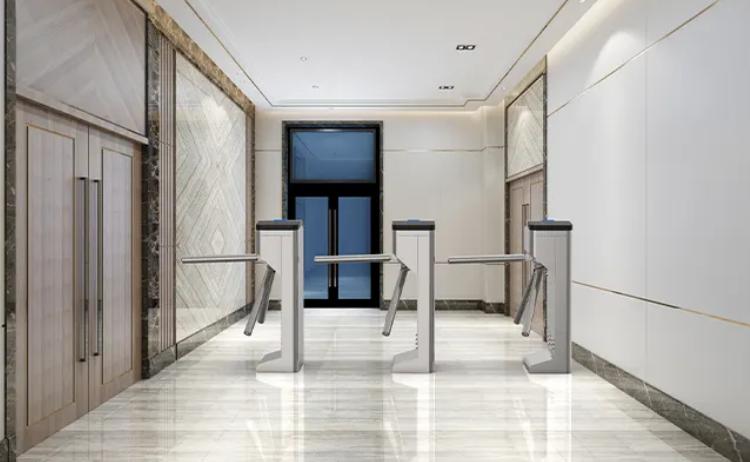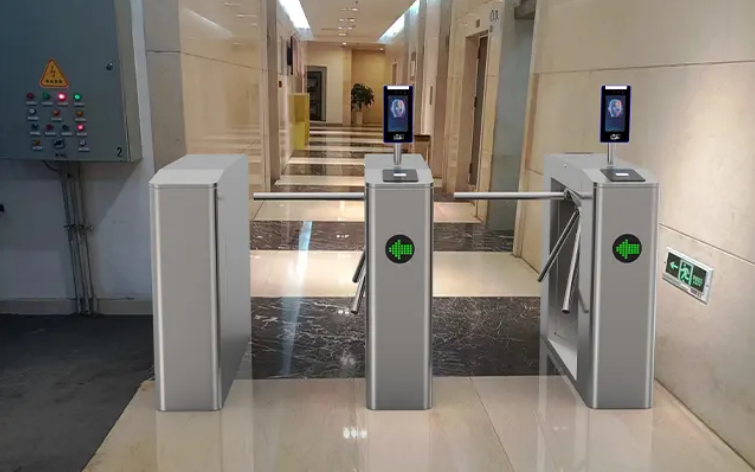In-Depth Flap Barrier Analysis for Better Decision-Making


Selecting the right flap barrier system is more than just picking a product off a catalog. For security managers and procurement officers, this decision has real-world consequences. Poorly chosen barriers can cause long entry delays, frustrate users, and even create security gaps. Without flap barrier analysis, many buyers rely on surface-level features or marketing claims, leading to decisions that backfire.
The truth is that each facility has its own needs. What works for a metro station won’t work for a corporate lobby or a research lab. That’s why structured analysis matters. A proper access gate evaluation helps buyers examine the system from all angles—performance, reliability, integration, and safety.
When done right, barrier analysis answers vital questions. Does this model support our access control software? Can it handle peak hour traffic? How does it react in an emergency? What are its long-term maintenance needs? With this information, teams can move from guessing to informed decision-making.
By the end of this guide, you’ll know how to analyze flap barriers using practical steps, performance metrics, and trusted industry methods. Whether you’re upgrading a building or starting fresh, this article will show you how to compare and evaluate systems with clarity and confidence.
What Are The Basics of Flap Barrier Systems
Before jumping into the analysis, it’s important to understand what a flap barrier system really is. At its core, a flap barrier is a motorized gate that opens and closes using two retractable wings—usually made of acrylic, tempered glass, or polycarbonate. These barriers control pedestrian movement, allowing access only when authorization is verified.
Flap barriers are typically used in secure buildings, transportation terminals, event venues, and corporate campuses. Their main function is to manage who enters and exits while preventing tailgating or unauthorized entry. Unlike traditional turnstiles, flap barriers offer faster throughput, quieter operation, and a more modern look.
Key components of a typical flap barrier system include:
- A motorized drive unit
- Sensor arrays (infrared or optical)
- A central control board
- Integration panels for access readers (RFID, QR, biometrics)
They operate based on signals from access systems. When someone scans a valid card or passes a biometric check, the wings retract to allow passage. Once the person passes through, the flaps close automatically.
Flap barriers are valued for their balance of security and efficiency. But to determine which model suits your facility, you must move past these basics and into proper flap barrier analysis—starting with performance evaluation.
The Importance of Performance Evaluation
Performance is where form meets function. A flap barrier that looks sleek but opens too slowly or fails to detect unauthorized users defeats its purpose. That’s why a barrier performance review is a critical part of your evaluation process.
There are several key performance indicators to track:
- Opening and closing speed: The flap wings should move swiftly and smoothly, typically between 0.3 and 0.6 seconds. Any delay here can cause queues or unsafe congestion.
- Throughput rate: This is the number of users the barrier can process per minute—usually 25 to 40. High-traffic areas need barriers with fast sensors and motors.
- Sensor accuracy: This measures how effectively the barrier detects valid and invalid entries. Good systems detect tailgating, obstruction, and direction of movement accurately.
- Uptime and fault rate: Track how often the system fails or jams. Frequent malfunctions lower trust and increase maintenance costs.
Use test runs, user simulations, or vendor demonstrations to collect this data. Record how the barrier performs under realistic conditions—such as a lunch break crowd or emergency drill. Vendors often provide benchmark stats too, which you can review in this official performance guide.
Real performance data gives you an objective way to compare models. It helps cut through marketing noise and focus on results that impact real-world use.
Methods for Conducting Flap Barrier Analysis
There are several ways to analyze a flap barrier system effectively. Whether you’re reviewing a demo unit or evaluating multiple models, having structured methods helps ensure no critical detail is missed.
Start with observational testing. Watch how the barrier operates over several cycles. Pay attention to speed, smoothness, and user interaction. Do users hesitate? Does the gate close too quickly or lag?
Next, collect access logs and event data. Many modern systems store detailed logs of entry attempts, sensor alerts, and error codes. Reviewing these records over a week or month can reveal patterns—like frequent rejections or sensor faults.
Use checklists and scorecards to keep the process consistent. Evaluate performance, integration, safety, and physical design for each system. A side-by-side format helps when narrowing down to your final choice.
Advanced facilities also use simulation tools. These allow you to test how the barrier would behave under different scenarios—peak hours, fire drills, or access control changes. Security associations like ASIS International offer tools and guides for access gate testing.
Finally, get feedback from actual users or maintenance teams. They can reveal usability issues or recurring faults not visible during short-term testing. Their experience adds a valuable dimension to your analysis.
With these tools and approaches, flap barrier evaluation becomes systematic. It ensures that every decision is backed by data and real-world observation.
Criteria for Assessing Build Quality and Reliability
Flap barriers aren’t cheap, and they aren’t meant to be replaced every year. That’s why assessing build quality is vital in the buying process. A solid, well-built unit will operate reliably for years and reduce long-term costs.
Start by checking material quality. Stainless steel (especially SUS304 or SUS316) is the gold standard for cabinet construction. It resists rust, corrosion, and physical damage. Flap wings should be made of shatter-resistant acrylic or impact-tested polycarbonate.
Next, inspect craftsmanship. Look at welds, panel joints, and flap hinges. Well-finished units show fewer alignment issues and hold up better over time. Poor construction often leads to misaligned flaps, vibration, or internal wear.
Consider motor type and design. Brushless DC motors are more durable and efficient than brushed motors or stepper drives. They generate less heat, suffer less wear, and perform better under constant use.
Review the system’s mean time between failure (MTBF). Higher MTBF means the unit can operate longer between malfunctions. Ask the vendor for this data if it’s not published.
You can explore a complete checklist of construction and durability factors in this detailed quality check guide.
Reliability doesn’t just improve safety—it builds user trust and saves maintenance budgets. A durable barrier is one that protects today and performs just as well five years from now.
Operational Efficiency and Its Role in Evaluation
Efficiency isn’t just about how fast a flap barrier opens. It’s about how well the entire system supports daily operations. When evaluating flap barriers, it’s critical to look at their impact on the broader flow of people, maintenance schedules, and even energy usage.
Start by analyzing daily throughput. How many people need to pass through the barrier per minute or hour during peak times? If the system can’t handle the volume, users will queue, leading to frustration and potential security risks. The barrier’s sensors, motor response, and flap speed must work in harmony to avoid bottlenecks.
Next, assess response timing. A good system reacts instantly to valid access signals and resets quickly for the next user. Delays—even small ones—can disrupt foot traffic in busy facilities like train stations or office towers.
Maintenance cycle is another efficiency marker. Barriers that require constant adjustment, cleaning, or repairs end up costing more and reducing uptime. Look for models with self-diagnostics, modular parts, and long motor life ratings.
Then there’s energy efficiency. Some barriers consume more power than necessary, especially when idle. Check whether the system includes sleep modes, LED dimming, or low-energy motors. These features are crucial in buildings aiming to reduce operational costs or meet green building standards.
Ultimately, operational efficiency directly affects user experience and running costs. A system that performs well, runs quietly, and needs little downtime is far more valuable than one that’s just “secure on paper.”
Analyzing Access Control Compatibility
No flap barrier exists in isolation—it’s always part of a larger access control ecosystem. This makes compatibility one of the most important parts of flap barrier analysis. If your barrier doesn’t integrate properly with your security systems, it becomes a liability instead of an asset.
Start with reader compatibility. Most modern barriers are designed to work with RFID card readers, QR code scanners, fingerprint devices, or facial recognition systems. But not all accept every brand or protocol. Confirm that your current or planned devices match the input types the barrier supports.
Then examine software integration. Many facilities use centralized access platforms that manage all entry points, user credentials, and activity logs. The barrier must speak the same language—whether it’s via Wiegand, RS-485, or TCP/IP. Some barriers only support basic formats, which can lead to communication delays or feature limitations.
Consider future scalability. Will you be adding biometric verification or mobile access in the next year? Choose a barrier that’s open-protocol or modular so it can grow with your infrastructure. Avoid models locked into one access technology or vendor.
Also ask about real-world implementation. Some systems claim to support a wide range of integrations but fail in practice due to firmware bugs or poor wiring design. This is where vendor demonstrations and customer case studies are extremely useful.
The more compatible and flexible your barrier is, the easier it will be to integrate, manage, and scale as your building or team grows. Missteps here are expensive—so take time to confirm compatibility early in your evaluation.
User Safety and Emergency Functions
Safety isn’t optional in access control—it’s a legal and functional necessity. Evaluating how well a flap barrier system protects users during daily operation and in emergencies is a core part of any access gate evaluation.
The most essential feature is anti-pinch protection. This system uses sensors to detect if anything is caught in the flap’s path—like a bag, a stroller, or a person’s leg. If an obstruction is sensed, the barrier stops or reverses. Poorly tuned systems either fail to detect hazards or are so sensitive that they trigger false alarms.
Next is obstacle detection. Sensors along the passageway check if a user has fully exited before the wings close. This prevents accidents caused by premature flap movement. Good systems also detect when users pause or reverse direction unexpectedly and adjust accordingly.
Emergency response capabilities are equally vital. In the event of a fire, power failure, or panic situation, the barrier should default to an open state or respond to a manual override. Some barriers integrate directly with building fire alarms, opening automatically when triggered.
Also evaluate the visibility of safety indicators. Are there clear LED indicators? Are emergency release buttons easily accessible? Can the barrier be bypassed safely by security staff during an incident?
User safety doesn’t just protect individuals—it also minimizes legal liability and downtime. When reviewing flap barriers, demand documented proof of safety features, and don’t settle for vague “yes, it’s safe” answers.
The Role of Data in Decision-Making
Smart decisions are based on data—not assumptions. That’s why data collection and analysis play a powerful role in selecting the right flap barrier system.
Start with usage metrics. Review logs showing how many people pass through the barrier daily, peak times, and the frequency of denied entries. These logs reveal not just system capacity but also how users interact with the barrier.
Then review error reports and diagnostics. Systems that keep track of motor faults, sensor failures, and abnormal behavior allow your team to detect patterns and prevent downtime. If one barrier shows repeated sensor errors while others don’t, that’s a red flag.
Use key performance indicators (KPIs) like:
- Average processing time per user
- False rejection rate
- System uptime
- Energy consumed per day
These KPIs help compare models side by side, especially when testing demo units or reviewing manufacturer-provided stats. You can set up a scoring system based on your facility’s needs and weigh the results accordingly.
Also, consult external decision-making frameworks like those from McKinsey & Company or government procurement agencies. These offer structured ways to weigh performance, cost, and risk in complex purchasing scenarios.
When decision-makers rely on measurable results, the process becomes strategic instead of instinctual. That’s the power of using data—objectivity replaces guesswork, and the outcome is more likely to meet long-term goals.
Frameworks for Access Gate Evaluation
Evaluating flap barriers isn’t just about checking features—it’s about comparing options using structured methods. That’s where evaluation frameworks come in. These help ensure every system is judged fairly and consistently.
Start by creating a vendor comparison matrix. List all the important features across the top (e.g., motor type, integration support, energy use, warranty), and rate each product across those rows. Assign weights to features based on priority—for instance, if sensor accuracy matters more than cabinet design, it gets a higher score multiplier.
Next, apply a scenario-based testing model. Simulate how each barrier would perform during peak hours, in emergencies, or with multiple access types. Score their responsiveness and flexibility during each scenario. This gives you real-world context beyond manufacturer claims.
Add a cost-efficiency index. Include not just initial price, but maintenance, installation, power consumption, and expected lifespan. This gives a more accurate picture of long-term value.
Use checklists or scoring templates provided by industry bodies or security consultants. Many follow ISO or ANSI standards, and some are available through associations like ASIS International.
Finally, use a structured decision-making model—like a weighted decision matrix or SWOT analysis—to present findings to stakeholders. This builds consensus and helps avoid bias in group purchasing decisions.
The goal of these frameworks is to turn flap barrier selection into a repeatable, logical process. With them, you’re not just picking what feels right—you’re choosing what performs right.
Common Pitfalls in Flap Barrier Selection
Even experienced procurement teams can fall into traps when choosing flap barriers. Awareness of these common mistakes can save you time, money, and operational headaches.
The first and most frequent error is focusing solely on price. While budget matters, the cheapest flap barrier rarely offers the best long-term value. Low-cost models often come with subpar sensors, noisy motors, or limited integration support. These shortcomings lead to maintenance issues, downtime, and early replacements—negating the initial savings.
Another mistake is ignoring real-world performance. Just because a spec sheet claims a high throughput rate doesn’t mean it performs well in your actual facility. Every environment is different. Test the barrier in context—especially during peak use hours—to see how it holds up.
Many buyers also overlook access control compatibility. They assume that any reader or software will “just work” with the barrier. In reality, mismatched protocols or unsupported platforms can cause serious integration delays. Always verify compatibility with your existing system before purchase.
Skipping a safety feature review is another risky move. Some systems may not include proper anti-pinch protection or emergency override features. This puts users at risk and exposes your organization to liability.
Lastly, not involving the end users or operations team can lead to poor adoption. If security staff or building users find the system awkward or unreliable, it won’t be used properly. Always gather feedback from those who’ll interact with the system daily.
By understanding these pitfalls, your team can avoid buyer’s remorse and select a flap barrier system that fits both functionally and operationally.
Applying Insights from Barrier Performance Review
After collecting data and conducting hands-on evaluations, the next step is to apply those insights effectively. This is where analysis translates into action.
Begin by summarizing the results from your testing. Use charts or comparison tables to highlight differences in speed, detection accuracy, downtime, and integration ease. Rank the systems based on your most critical metrics—such as user safety or peak throughput.
Interpret any anomalies in your results. For example, if one system rejects more users than others, is it due to overly sensitive sensors or a software misread? If another shows excellent uptime but poor speed, can it be tuned or configured better?
Use these insights to eliminate underperforming options. Narrow your list to 2–3 candidates that meet your key requirements. Then conduct a secondary review focused on long-term value—maintenance costs, warranty support, and upgrade flexibility.
It’s also valuable to share your findings with key stakeholders—IT, facilities, and finance teams. A well-documented barrier performance review strengthens internal alignment and supports the business case for investing in quality.
Real-life examples help too. If another facility has successfully used a certain barrier model in a similar environment, that adds credibility to your recommendation.
In short, use your performance review to guide strategic decisions. It ensures that every factor—from security to user experience—is weighed, validated, and aligned with your site’s actual needs.
Strategic Vendor Evaluation and Procurement
Choosing the right flap barrier model is only half the battle—the other half is selecting the right vendor. A good vendor ensures smooth deployment, responsive support, and consistent product quality.
Start by requesting technical documentation. This includes datasheets, user manuals, wiring diagrams, and integration guides. Vendors who hesitate or provide incomplete documents often lack the support infrastructure you’ll need post-installation.
Next, review the vendor’s product history and client references. Look for customers with similar use cases. If a vendor can deliver for a high-traffic airport or a corporate headquarters, they’re more likely to meet your expectations.
Ask about after-sales support and parts availability. Does the vendor offer firmware updates? How long are spare parts available after purchase? Will they train your team or provide local technical support? These factors make a huge difference when problems arise months or years down the line.
You can find detailed advice on vendor comparison in this comprehensive buying guide. It includes tips for evaluating cost transparency, support quality, and system scalability.
Make sure to compare warranty terms too. A one-year warranty may be standard, but some vendors offer extended protection for motors, sensors, or control boards.
In summary, vendor evaluation is about reliability, not just price. Pick a partner who understands your needs, supports your operations, and stands by their product.
Long-Term Value and Lifecycle Cost Analysis
Initial price is just one piece of the financial picture. Smart buyers look beyond that to evaluate the total cost of ownership (TCO) over the flap barrier’s lifespan.
Start by estimating maintenance costs. How often will the barrier need servicing? Are parts easily replaceable? If a motor fails, can it be swapped without replacing the entire unit? Lower-maintenance models reduce downtime and staffing costs over time.
Factor in energy consumption too. Barriers that run quietly and efficiently 24/7 are more sustainable. Some models offer sleep modes, energy-saving LEDs, or dynamic motor torque management to lower daily usage.
Plan for upgrades and expansions. If you’re adding new access points or switching to facial recognition later, choose a system that supports modular upgrades. Avoid proprietary systems that lock you into one vendor or outdated hardware.
Review the expected lifespan of critical components—motors, control boards, sensors. Most high-end barriers offer 5–10 years of reliable service if maintained well.
Also consider hidden costs—like poor user experience, delayed entries, or frequent false rejections. These impact employee satisfaction and productivity in the long term.
Lifecycle cost analysis turns a purchase into a strategic investment. It ensures that what you install today will continue to deliver value for years, not months.
Conclusion
Choosing the right flap barrier doesn’t have to be a gamble. With structured flap barrier analysis, you can make decisions that are informed, practical, and future-proof. From evaluating sensor accuracy to checking integration protocols and projecting lifecycle costs, every step helps narrow your options to the systems that truly fit.
The real difference between a functional barrier and a frustrating one comes down to how well you analyze. Buyers who rely on data, field tests, and proven evaluation frameworks don’t just get better products—they build better systems.
So if you’re preparing for a new installation or replacing an outdated system, don’t rush the decision. Follow the steps, use the tools, and engage with the insights in this guide. You’ll end up with an access control solution that’s secure, reliable, and built to perform.
FAQs
Q1: How can I test a flap barrier without installing it?
Request a vendor demo or visit a site where the system is in use. Use simulated access credentials to evaluate speed, accuracy, and sensor performance.
Q2: What’s the most important metric in barrier performance?
It depends on your use case, but throughput rate, false rejection rate, and response time are often key for high-traffic facilities.
Q3: Can I upgrade my flap barrier system later?
Yes, if the system is modular. Check if it supports new reader types or software updates.
Q4: Should I prioritize brand reputation in selection?
Brand helps, but focus more on verified performance, integration support, and vendor responsiveness.
Q5: Are all flap barriers energy efficient?
No. Look for systems with standby modes, low-power motors, and smart energy features.












